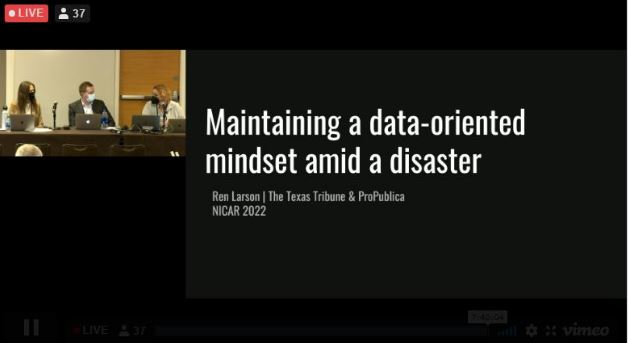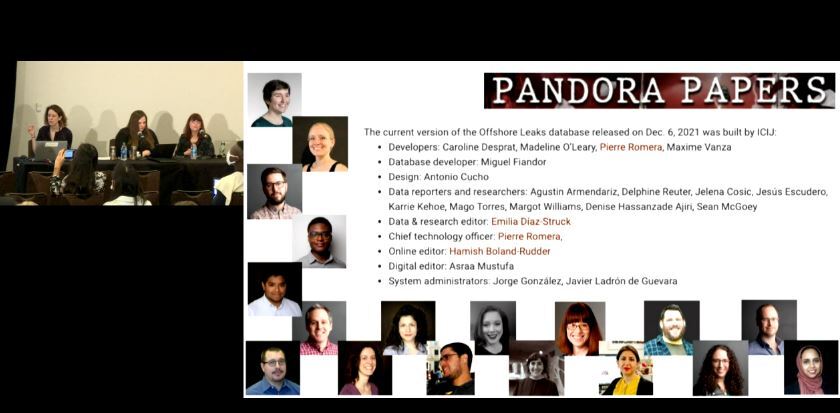Managing big data for investigating disaster emergency and recovery processes
Editor’s note: This article is from virtual reporting from the live streamed panel on March 3, 2022.
How do journalists handle big sets of data when they cover natural disasters or climate change related topics?
It can be difficult to provide accountability while covering disasters, said Ren Larson, a data reporter with The Texas Tribune + ProPublica’s investigative team. Government agencies are often slow at providing updates on the number of casualties. Investigations can be delayed for months, if not years.
Despite such hurdles, it’s important for journalists to maintain a data-oriented mindset even when data is not forthcoming, Larson said Thursday at the NICAR conference in Atlanta.
Know your regional disasters
Larson highlighted one of her stories that ProPublica co-published with NBS News and The Texas Tribune on Hurricane Ida, whereby journalists focused on the large number of carbon monoxide poisoning cases triggered by the recent storm.
We know hurricanes lead to power outages, which often lead to carbon monoxide poisoning when people use gas-powered generators with poor ventilation, Larson said. The team requested medical examiners data and coroners data to be able to find deaths.
Know your data: identify your sources
Larson said her team was able to report a series of accountability stories because they knew which data was readily available and those that needed to be requested.
Data readily available, she said, includes census data, how many people own cars and other sources that help in understanding a neighborhood.
Data to be requested includes 911 calls that EMS agencies keep track of and fire department records of who went to individual homes through which people’s contact information for sources could be obtained.
Disasters are challenging, and teamwork is crucial
Often when journalists are covering disasters, they are personally experiencing that emergency as well, Larson said. Without power and limited phone reception, working with a team can “help you get what you need to get done when you are not able to do it yourself,” she said.
The DRY Method
Jeremy Finley is the chief investigative reporter for WSMV-TV, the NBC-affiliated station in Nashville, Tennessee. Finley said the state is prone to tornadoes and floods, and witnesses one or two disasters a year.
“Flooding is such an issue for us that it is now a predominant part of our coverage,” said Finley.
It is not uncommon for journalists to be asked to pitch an investigative angle after a storm clears, for which Finley outlined the DRY method:
Expedited FOIA requests
Larson suggested asking for Freedom of Information Act, or FOIA, requests to be expedited while covering a natural disaster where time is truly relevant.
Since that alone doesn’t guarantee a response, Finley suggested producing as many stories as you can when waiting for the data to arrive and checking in regarding the requests at each point.
Given these recommendations, Larson also mentioned that sometimes FOIAs cannot be answered immediately, in cases when death certificates haven’t arrived yet, for example. In these instances, knowing the law goes a long way, she said.
Being accurate when dealing with big data
Going to the person who is responsible for a particular data is important to understand databases. Doing so will help in understanding caveats to slice data you haven’t seen before and how information is input, suggested Larson.
According to Finley, the National Weather Service is a reliable resource along with the meteorologists in TV newsrooms. At times when information from the government contradicts a journalist’s reporting, showing the self-collected data is key.
As journalists, it’s also not uncommon to encounter data discrepancies, when two or more databases of comparable data don’t add up. During such times, Larson asserted that it’s important to understand raw data and methodology that was taken into account. Running things by experts is also useful in answering questions. Larson also mentioned touching base with other experts to vet her methodology while doing analyses.





